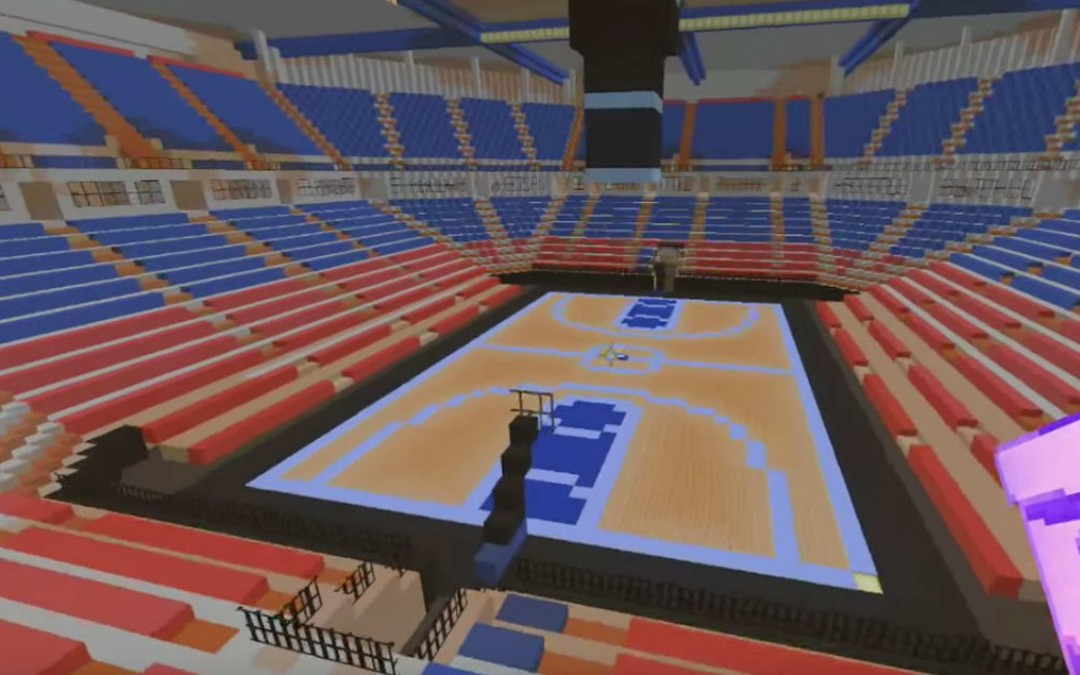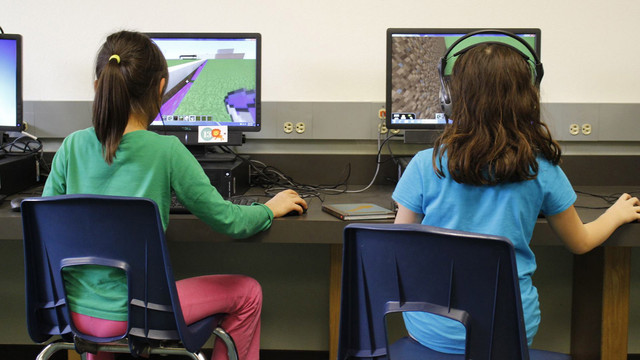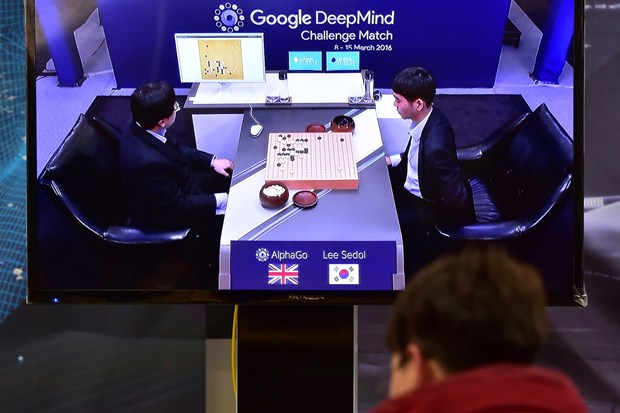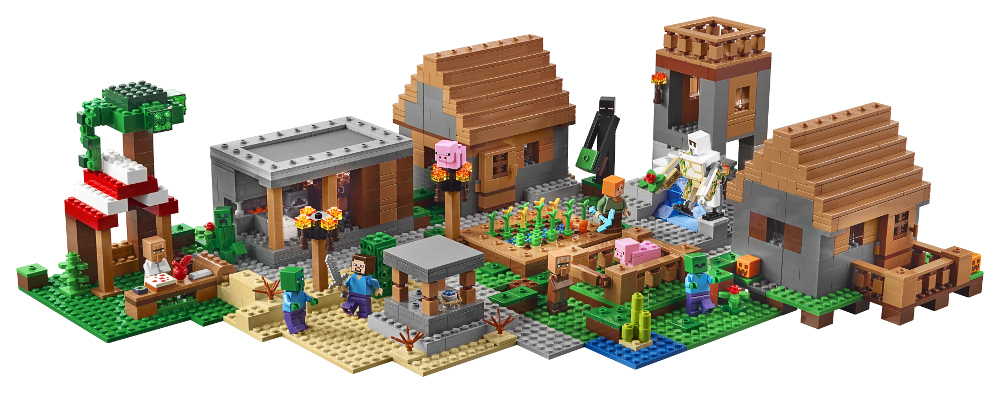
by Stone Marshall | Apr 23, 2016 | Minecraft News |
As Sleep Train Arena closed its doors to NBA basketball, an avid Minecraft builder recreated the legendary Sacramento venue.
The popular computer game Minecraft allows players to live without traditional structure or direction. Thus, gamers are free to create whatever they want inside of the Minecraft world.
User “The Greynation” did just that, by creating popular, NBA, MLB and NFL stadiums via Minecraft building blocks.
Prior to the start of the final season at Sleep Train Arena, he made a near-exact inside/outside replica of the venue the Kings have called home since 1988.
Check out the video below of the numerous in-arena entertainment setups as envisioned by “The Greynation:”
Fan Creates Sleep Train Arena in Minecraft

by Stone Marshall | Apr 22, 2016 | Minecraft News |
For those not in the know, Minecraft is a bestselling open world game where players can explore and interact with a world of blocks (each carrying different attributes inside that world). The phenomena has spread far and wide, laying the foundation for one of the most creative digital playground in the world. A recent report from The New York Times reveals that the game is selling 10,000 copies per day. Considering that the game was first launched five years ago, that’s a very impressive sum.
Most games enjoy remaining relevant during a release window spanning no more than the first few months, which is when games tend to sell the most. Meanwhile,Minecraft has sold over 100 million units to date, helped in no small part to its availability on a multitude of platforms.
Given its simple graphics and enormous creative possibilities, it’s no surprise thatMinecraft also has seen huge success in the younger generation. These blossoming gamers can mine blocks and then use them to create defenses against enemies, or they can play around freely and create whatever they want. You can choose one of five different game modes, but you can boil it down to either playing or creating. The game’s creative mode is the component that engages players to recreate things like the U.S.S Enterprise from the Star Trek series, or the main capitol from Game of Thrones.
For kids, a playground that allows for all these different creations is driving their understanding of computational thinking. The report argues that this is one of Minecraft’s most powerful effects. It’s no surprise then that Microsoft announced Minecraft: Education Edition.
Minecraft’s worlds are enormous; an unaltered world consists of up to 60 million blocks. The block that drives this computational thinking is primarily the redstone, which allow players to experiment with logical functions and create other games inside the game itself. Some players have even created functioning computers. These stones basically work like electrical circuits, and specific objects you create inside theMinecraft world will be activated and perform a predetermined action when activated by a redstone. Of course, you can also connect redstones to one another, opening up a whole slew of possibilities. Working like this requires a lot of rewiring, and things won’t always work the way you imagine.
Kids are learning to engage in a visual form of debugging, where they have to experiment and find the issue. The report mentions a fifth-grader that tried creating a redstone door that didn’t open when activated, so she had to track down the failing component of her redstone setup and fix it manually.
Young gamers are learning problem solving by playing around in digital worlds, and they’re doing it in a way that resembles programming logic. Thus Minecraft is, perhaps, teaching our kids to learn programming more effectively than our educational systems.
MINECRAFT SELLS 10,000 COPIES PER DAY — TEACHES COMPUTATIONAL THINKING

by Stone Marshall | Apr 18, 2016 | Minecraft News |
The artificial intelligence created by Google and London-based DeepMind has taken a two-game lead in a landmark championship against the one of the world’s best players at the ancient board game of Go.
The AlphaGo AI defeated South Korean grandmaster Lee Sedol in another tense game, at the Korea Baduk Association in Seoul on Thursday.
The match was another tight encounter, which entered overtime before AlphaGo eventually triumphed. “AlphaGo played some beautiful creative moves in this game,” said Demis Hassabis, Deepmind founder, on Twitter. He added that 100 million people had watched the first match online, including 60 million in China.
The victory puts Deepmind on the verge of a remarkable triumph, which some experts have suggested is a decade or more ahead of schedule in the development of true, ‘thinking’ AI.
The two sides will play three more times over the next week, with the winner taking a $1 million prize. Lee will have to win every remaining match to take home the prize.
Deepmind had already defeated the European champion of Go, the company said in an announcement made in the journal Nature in January. Google purchased Deepmind for an estimated £400 million in July 2014.
The territorial 3,000-year-old game is regarded as one of the most complex that a computer could be asked to tackle, having simple rules that extrapolate out into virtually endless, intricate scenarios. Unlike chess, which can be theoretically masted by memorising an admittedly vast number of moves and scenarios, Go requires human-like intuition, thinking and forward planning to be successful.
AlphaGo combines advanced search techniques with neural networking, allowing it to both think creatively and take advantage of huge amounts of data about previously played games of Go. Using 12 ‘layers’ of AI, it selects its next move using just one element of its system while the others predict how the rest of the game will play out. Predicting the future in this way, it adjusts its strategy and moves gradually towards victory.
The development of AlphaGo is regarded as an early step towards a true artificial intelligence, which could have an incalculable impact on human lives, economics and technology.
Deepmind AI beats human champion again

by Stone Marshall | Apr 18, 2016 | Awesome Book News, Minecraft News |
From the start, the enemy aliens are making kills — three times they destroy the defending laser cannon within seconds. Half an hour in, and the hesitant player starts to feel the game’s rhythm, learning when to fire back or hide. Finally, after playing ceaselessly for an entire night, the player is not wasting a single bullet, casually shooting the high-score floating mothership in between demolishing each alien. No one in the world can play a better game at this moment.
This player, it should be mentioned, is not human, but an algorithm on a graphics processing unit programmed by a company called DeepMind. Instructed simply to maximise the score and fed only the data stream of 30,000 pixels per frame, the algorithm — known as a deep Q-network – is then given a new challenge: an unfamiliar Pong-like game called Breakout, in which it needs to hit a ball through a rainbow-coloured brick wall. “After 30 minutes and 100 games, it’s pretty terrible, but it’s learning that it should move the bat towards the ball,” explains DeepMind’s cofounder and chief executive, a 38-year-old artificial-intelligence researcher named Demis Hassabis. “Here it is after an hour, quantitatively better but still not brilliant. But two hours in, it’s more or less mastered the game, even when the ball’s very fast. After four hours, it came up with an optimal strategy — to dig a tunnel round the side of the wall, and send the ball round the back in a superhuman accurate way. The designers of the system didn’t know that strategy.”
In February, Hassabis and colleagues including Volodymyr Mnih, Koray Kavukcuoglu and David Silver published a Nature paper on the work. They showed that their artificial agent had learned to play 49 Atari 2600 video games when given only minimal background information. The deep Q-network had mastered everything from a martial-arts game to boxing and 3D car-racing games, often outscoring a professional (human) games tester. “This is just games, but it could be stockmarket data,” Hassabis says. “DeepMind has been combining two promising areas of research — a deep neural network and a reinforcement-learning algorithm – in a really fundamental way. We’re interested in algorithms that can use their learning from one domain and apply that knowledge to a new domain.”
DeepMind has not, admittedly, launched any products — nor found a way to turn its machine gameplay into a revenue stream. Still, such details didn’t stop Google buying the London company — backed by investors such as Elon Musk, Peter Thiel and Li Ka-shing — last January in its biggest European acquisition. It paid £400 million.
DeepMind: inside Google’s super-brain

by Stone Marshall | Apr 17, 2016 | Minecraft News |
Having revealed the large Lego Minecraft Fortress at New York toy Fair, today Lego added a surprise Minecraft set to its line-up – Lego Minecraft The Village (21128).
Not shown at Toy Fair and coming in June, The Village expands Lego’s Minecraft world considerably. It’s a large set featuring 1600 pieces and includes rain forest, snow and desert biomes as well as a watchtower, library, blacksmith, butcher and marketplace.
It also comes with an array of different Minecraft mini-figures. These include Steve, Alex, zombie and zombie villager, plus a Creeper, enderman, pig, baby pig, iron golem and 2 villagers (a farmer and a librarian).
Once built it is an impressive 5” (15cm) high, 19” (49cm) wide and 17” (44cm) deep. This will combine with other Minecraft Lego sets to offer a complete Minecraft world. Other nice touches are the fold out library and butcher’s buildings as well as the flip open forge.

Lego Minecraft – The Village
Some may balk at the need to recreate Minecraft in Lego form as it is already Lego in virtual form. But although at first the physical Minecraft bricks feel a little restrictive, being able to combine this with a larger Lego collection opens up new ways for children to play.
Most telling is the attention to detail. Accessory elements include a crafting table, water bucket, emerald-ore-style elements, 2 pumpkin heads and a chest with emerald-style elements. These alone are enough to win over young Minecraft fans.
Adding this to other popular Lego kits coming this year (Lego DC and Marvel Superheroes, Lego Ninjago, Lego Nexo Knights and Series 9 Mixels) and it looks like another strong showing from the Billund based brick masters in 2016.
Lego Minecraft The Village set 21128 will be available from 1st June for $199.99.
Andy Robertson is a freelance technology and gaming expert for a range of national media. He produces the daily Family Gamer TV show on YouTube.
‘Lego’ Reveals Huge 1600 Piece ‘Minecraft’ Set

by Stone Marshall | Apr 17, 2016 | Minecraft News |
The sandbox world of Minecraft allows you build practically anything. Soon though, it won’t be used simply to create spatial objects, but artificial intelligence systems. At least, that’s Microsoft’s plan, taking an project aiming to teach AI to make its own decisions and launching it as an open-source testbed.
Currently, Microsoft’s internal study sees a small team of computer scientists trying to teach a virtual player how to navigate Mojang’s blocky world. The AI has only the same available resources a flesh and blood player would have access to, and must learn from its mistakes.
The game is a surprisingly good starting point to help learning AIs develop. After all, Minecraft drops human players into a randomly generated world and abandons them with no instructions, leaving them to intuit their surroundings and start creating. Putting a virtual mind into the same scenario and trying to get it to figure things out theoretically works on the same principles as human development.
The Minecraft ‘agent’ begins with zero knowledge, and no set objective. Through trial and error, such as walking into environmental hazards, it begins to build an objective and work towards it — in the case of Microsoft’s study taking place in New York, reaching the highest point in the world. The AI begins to understand its role and progress via incremental rewards, while eliminating data that’s irrelevant to its goal, such as time of day.
“We’re trying to program it to learn, as opposed to programming it to accomplish specific tasks,” said Fernando Diaz, senior researcher on the project. “[Minecraft is] a digital playpen for artificial intelligence. It’s an environment in which we can develop an algorithm for teaching a young artificial intelligence to learn different concepts in the world.”
The test is a part of the wider Project AIX, developed by Katja Hofman, a researcher working at Microsoft’s Cambridge labs. Frustrated by the simplicity of other games used to develop AI, she wanted something more focused on adaptive learning.
“Minecraft is the perfect platform for this kind of research because it’s this very open world,” Hofmann said. “You can do survival mode, you can do ‘build battles’ with your friends, you can do courses, you can implement our own games. This is really exciting for artificial intelligence because it allows us to create games that stretch beyond current abilities.”
The ultimate ambition is to make artificial intelligence more like general intelligence — that is, how we humans can combine our ‘programming’ in different skills to achieve desirable results. Most AI development to date has focused on getting machines to do one task really well, whereas the freedom of Minecraft allows AIX to take a more exploratory approach.
“The things that seem really easy for us are actually the things that are really difficult for an artificial intelligence,” said Robert Schapire, one of the scientists currently working on the project.
AIX itself is currently available to academic researchers, but Microsoft will be making it widely available this summer. It consists of a mod for the Java version of Minecraft, and a piece of code that helps AI agents sense and act within the environment, growing in experience as it processes feedback from its own actions.
However, it’s not seen as a consumer project, but rather a way to attract a broad range of researchers to experiment with AI development. It will be compatible with Windows, Linux and Mac OS, and more confident users can program their agents in “any programming language they are comfortable with”.
AI tests mean Minecraft will soon be able to play itself






